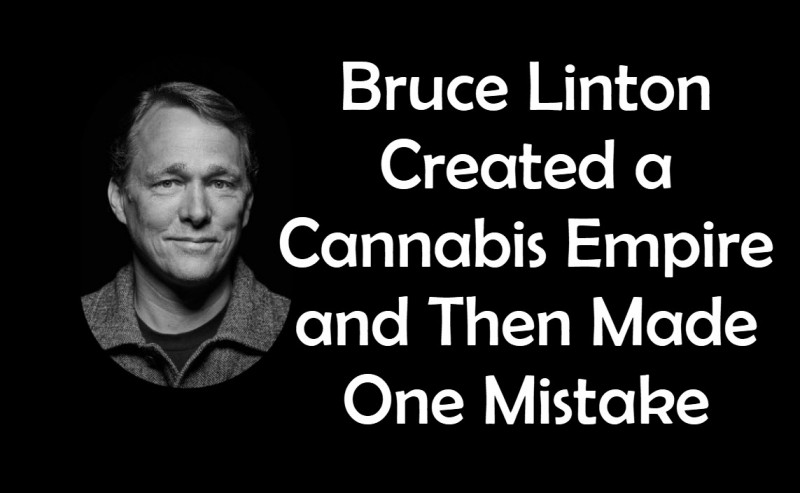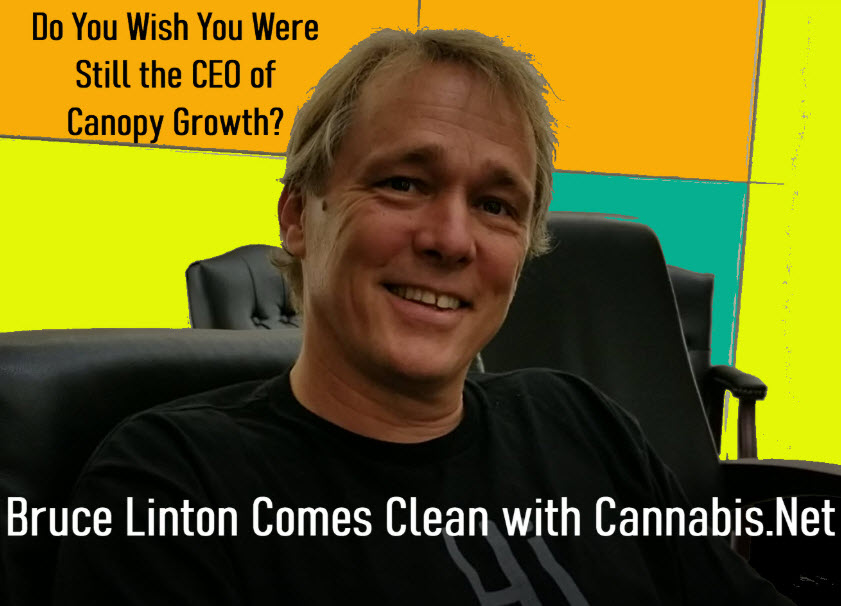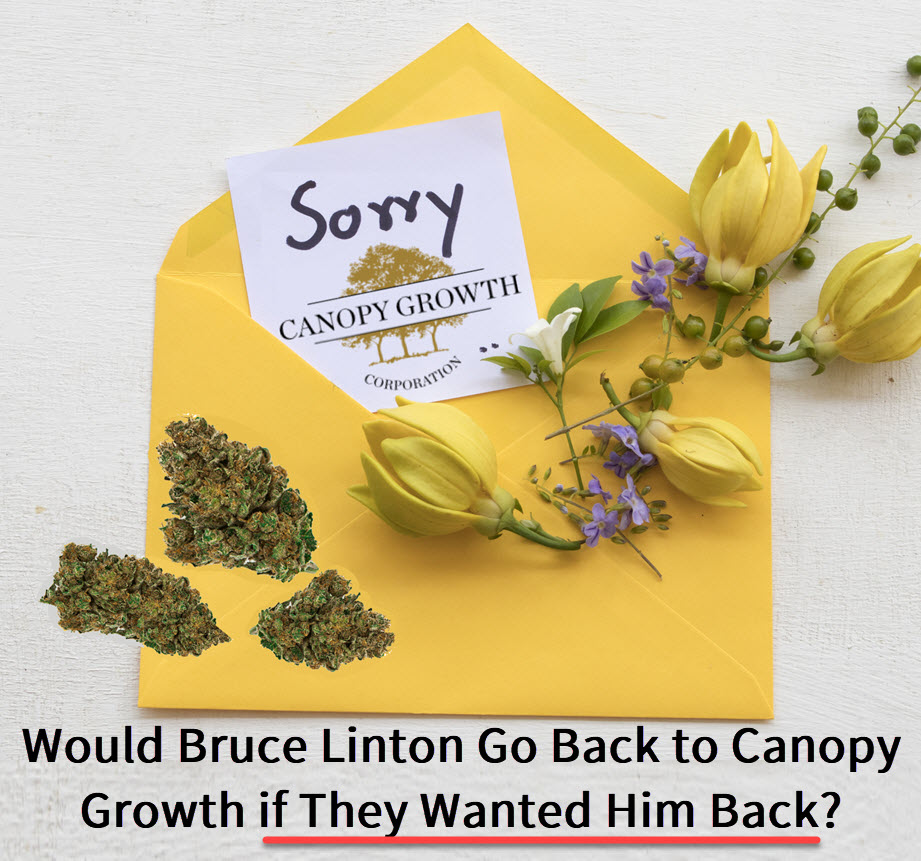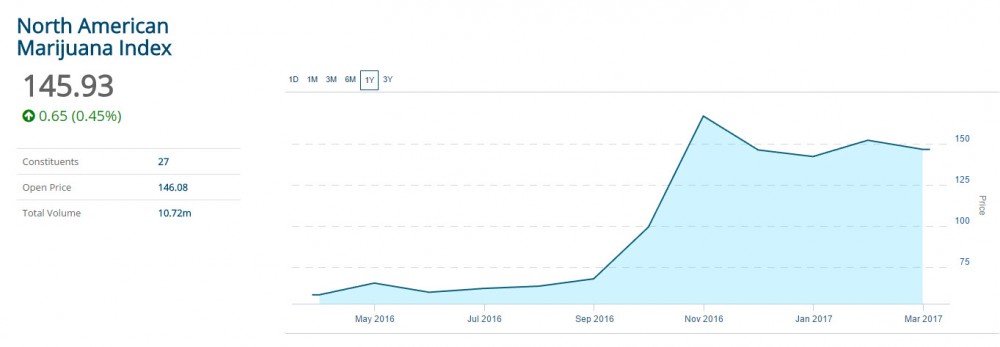Bruce Linton Created a Cannabis Empire and Then Made One Mistake
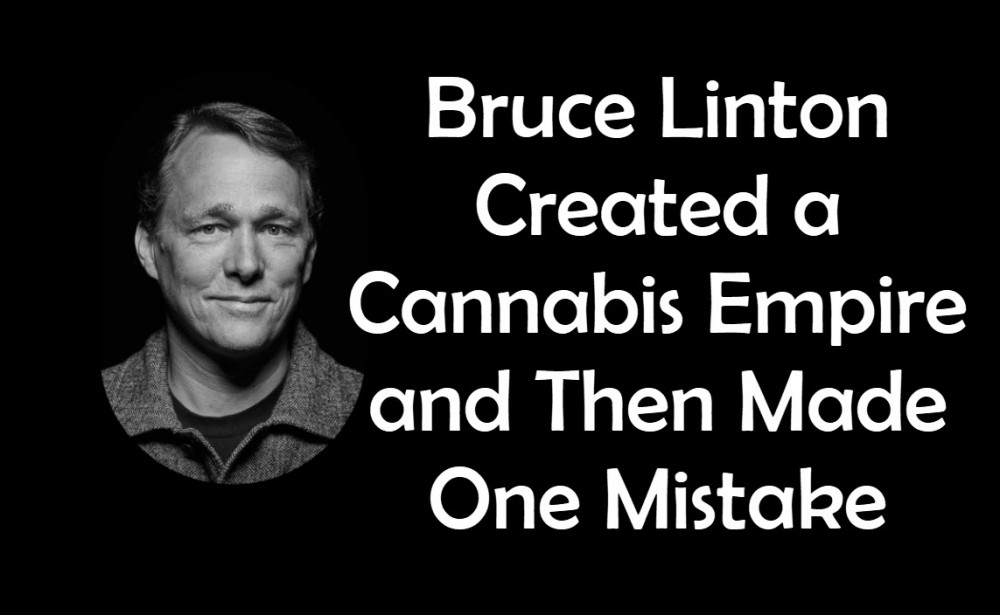
As you know by now, Bruce Linton, founder and CEO of Canopy Growth, has been removed from his position at Canopy Growth by the board of directors. Bruce co-founded Canopy Growth over 16 years ago in an old, deserted chocolate factory in Canada and built it into “the” global cannabis powerhouse. So, what went wrong? What went right? Why is Bruce Linton looking for a new job this week after setting up one of the most powerful cannabis companies on the face of the earth?
Bruce was released from his position due to a few quarters of poor earnings. Constellation Brands invested over $4 billion, yes with a “B”, into Canopy Growth awhile back with the hopes of positioning itself as a global leader in cannabis for years to come will diversifying itself away from just being an alcohol conglomerate. Constellation saw the early writing on the wall as cannabis was replacing booze in legal states at a rate of about 16% to 18%. Alcohol sales drop in legal cannabis states, now magnify that on a global scale and Constellation decided to make a bet to secure its place in the future of consumer discretionary income.
Bruce took the Constellation investment money and went on a massive buying spree, as he should of as soon as you get that kind of funding. Bruce is a brilliant CEO and knew that in order to be a major worldwide player he had to get out of his native Canada. Canada, with only 37 million people, could not buy and consume enough cannabis on its’ own to support the growth that Wall Street was looking for out of Canopy Growth. To put it in perspective, the state of California alone has 39 million people and a bigger GDP than the entire country of Canada.
One of the genius moves of Bruce’s career was to use the archaic cannabis laws of the US against the US cannabis industry and other investment banks and VCs. Cannabis is listed as a schedule 1 drug by the FDA and DEA, and THC and CBD are controlled substances on the Controlled Substances Act in America. US banks, VCs, and investment funds can not legally invest or buy companies in the cannabis space yet without risk of a Justice Department review. They could risk losing their US banking license, access to the US SWIFT code, and access to the US dollar system. Technically, the Federal government could come after US based entities for aiding and abetting the sale of a schedule 1 drug, a felony offense.
So, what did Bruce do? He very smartly went on a buying spree! He could get great assets for the future all at 30% to 40% off because US and European entities could not bid on the sale of these companies or come in and buy them yet. It was a brilliant move! He took the $4 billion, created a 3 to 5-year plan, and started buying everything at a massive discount to future value due to the fact he was the only buyer of that scale in the market. He could build up a massive inventory of science, IP, and distribution for years to come while US competitors had no choice but to just sit and watch.
As Warren Buffett would say, Bruce was building up a huge moat that would insulate his business so that when the US Federal law changed around cannabis, he would have in insurmountable lead in many areas of hemp and cannabis. It is the same model Reed Hastings used at Netflix and Jeff Bezos used at Amazon for many years. Those companies were not profitable for years because they spent billions on content (Netflix) and infrastructure (Amazon Cloud) so that when the time came for everyone to realize how important streaming content and cloud storage was, they would have dominant, almost uncatchable positions. Bruce was doing the same for the cannabis space, getting out of Canada, buying companies across the globe, and establishing a dominant position for years to come, all while getting everything 30% off market prices.
So, what was his biggest mistake?
Bruce is an entrepreneur at heart. He took Canopy from an idea in an old chocolate factory to a worldwide powerhouse, watching the stock price go from a few pennies to over $52 at one point. He also secured a $4 billion “funding round” from Constellation Brands. So, what was his downfall or what could he have done differently?
Communication.
In general. alpha entrepreneurs like Bruce are not great communicators as they are used to having to do everything themselves in their startups. When you get used to startups and having to wear many hats at once, you don’t have management in place many cases that you can communicate with or need to talk about things with.
If I were Bruce Linton, after getting the $4 billion, I would have blasted a message to Canopy shareholders saying something like, “I am going to spend this money and buy up a ton of stuff at a 30% discount. I have a 3 to 5-year plan for cannabis world domination. We are going to lose money for a few years as I spend, spend, spend to build up our assets. I am not going to run the company on a 90-day earning schedule like Wall Street expects, and if you don’t like it, don’t buy our stock.”
The problem was that Canopy Growth was now a public company, a public company that had to report earnings to investors and Wall Street every 90 days, or quarterly. As every CEO of a publicly traded company will tell you, it is very hard to run a massive company on a series of 90-day sprints. Running a growing business like Canopy is a marathon, not a sprint, yet if a CEO misses his earnings numbers a few quarters in a row, he is likely going to be looking for a new job. Wall Street and investors demand growing revenues and profit, if you can’t deliver, they will find a new guy.
Ironically, the twist in the story is that just this past year both Buffett and Trump made comments about doing away with quarterly earnings because they just don’t make sense when you are trying to run or build billion-dollar companies. They suggested going to biannual or annual earnings reports in order to allow CEOs to run companies in more of a way private companies do business. The idea was met with pushback from regulating agencies such as the SEC and FINRA with claims that fraud and dubious deeds would be happening and not caught in an expediate fashion if companies had to show their books only once or twice a year.
Would Bruce still be at Canopy if they only had to report a yearly earnings number? Would he still be there if he had blasted the message out there that, “We are going to lose money for the next few years, I am going to buy everything I can while other people can’t bid on stuff!!”?
No one knows for sure, but something tells me Bruce Linton is already planning his next act and it will be a brilliant move based on his vast knowledge and experience.
Canopy Growth, you are now on notice.
BRUCE AND CANOPY, READ MORE...
DID BRUCE LINTON CAUSE A STOCK MARKET CRASH?
OR...
DOES BRUCE LINTON STILL WANT TO BE CEO OF CANOPY?
OR..
WOULD BRUCE LINTON GO BACK TO CANOPY GROWTH TODAY?
OR..
FIRST PIECE OF LEGAL WEED IN CANADA, WE WERE THERE.
OR...
IS IT A GOOD TIME TO BUY CANNABIS STOCKS, WE ASKED BRUCE LINTON.
OR..
CANADA LEGALIZES RECREATIONAL CANNABIS, CLICK HERE.
